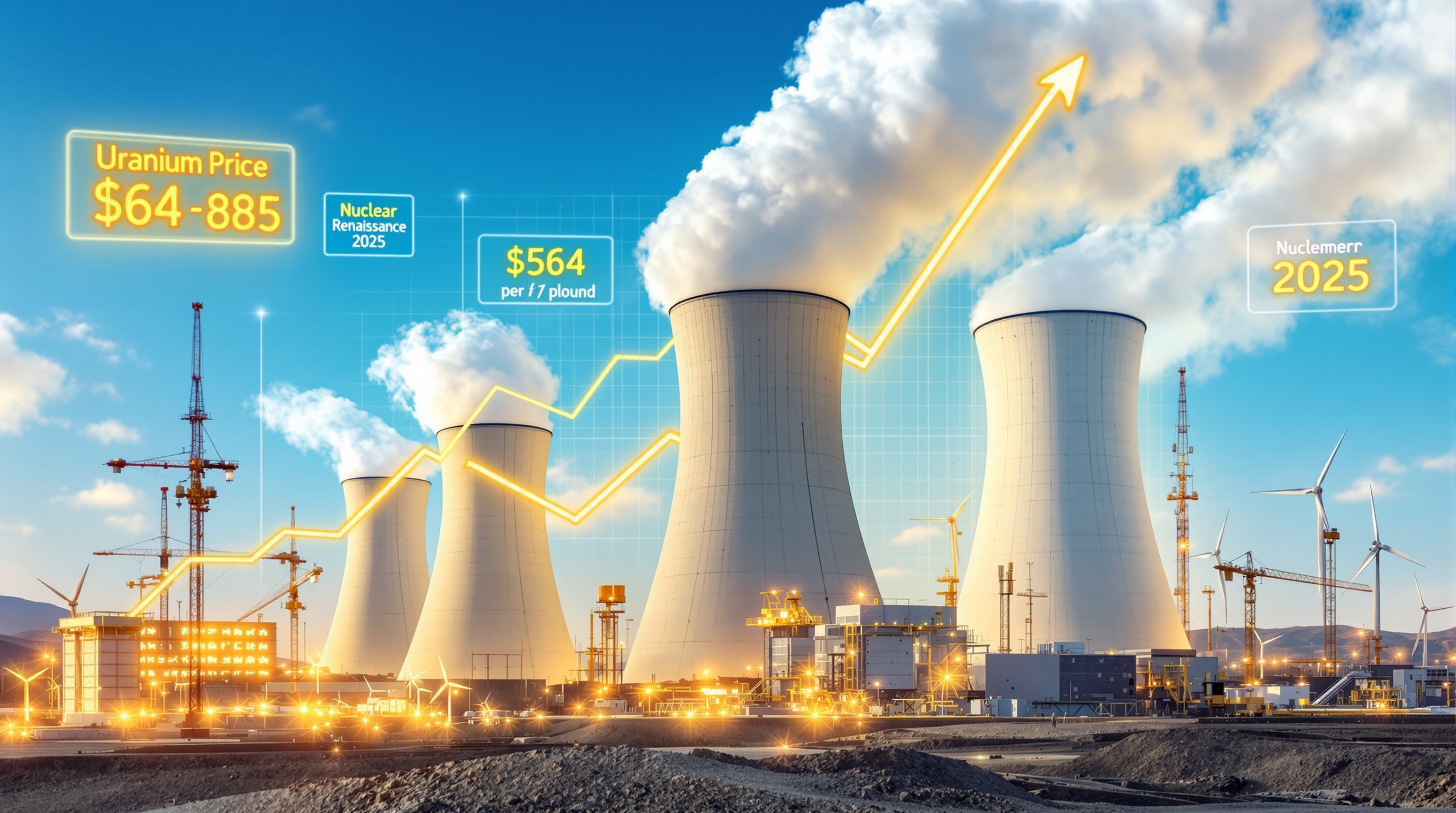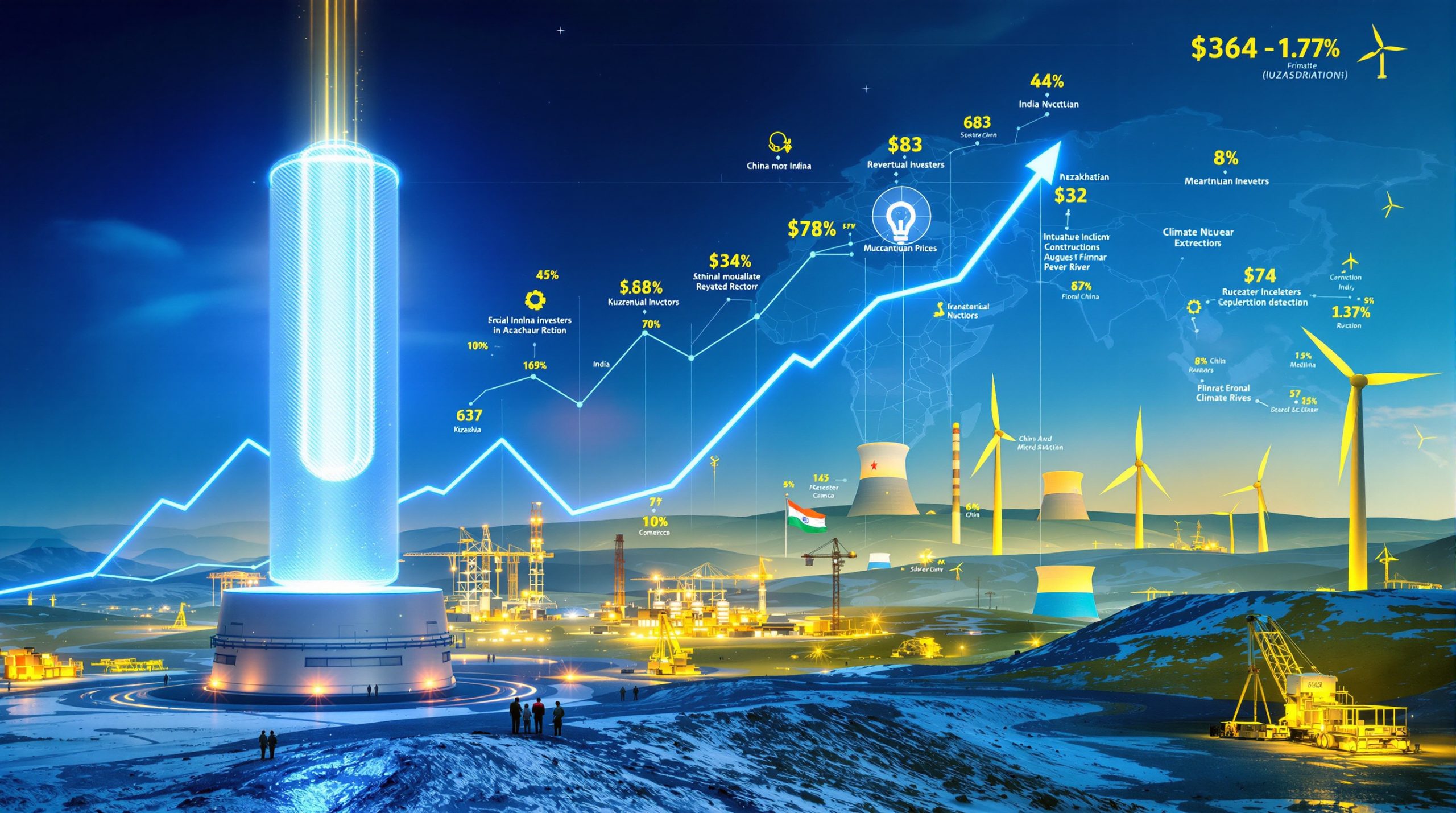What Happened to the Li-Cycle and Glencore Deal?
Battery recycling startup Li-Cycle Holdings Corp. announced in May 2023 that its potential acquisition by mining giant Glencore Plc had collapsed after months of negotiations. Following this announcement, the Canadian company immediately initiated a formal sale process, signaling its urgent need for financial stability.
According to Li-Cycle's official statement, the company faces pressing financial challenges that require "additional financing to meet existing obligations." This candid acknowledgment of financial distress came as a disappointment to investors who had hoped the Glencore partnership would provide the capital infusion needed to scale Li-Cycle's innovative battery recycling technology.
The Failed Acquisition Attempt
The negotiations between Li-Cycle and Glencore had been closely watched by industry analysts, as the potential deal represented a significant vertical integration opportunity for Glencore. The mining giant had previously invested $200 million in Li-Cycle in 2022 through a convertible debt financing arrangement, which demonstrated Glencore's initial confidence in the recycler's technology and business model.
"The termination of these talks represents a critical juncture for Li-Cycle's future," notes industry analyst Emily Warren. "Glencore's decision to walk away despite their existing investment suggests fundamental disagreements about valuation or operational viability."
The collapse occurred despite Li-Cycle's possession of valuable intellectual property in hydrometallurgical processing—technology that allows for higher recovery rates of battery-grade materials compared to traditional pyrometallurgical methods.
Financial Urgency Driving the Sale
The company's financial predicament appears to stem from several converging factors:
- Capital-intensive infrastructure requirements: Li-Cycle's "Hub and Spoke" model requires substantial upfront investment
- Extended timeline to profitability: Battery recycling facilities typically require 18-24 months to reach operational efficiency
- Rising construction costs: The company's flagship Rochester Hub experienced significant cost overruns, with projected costs increasing from $485 million to more than $560 million
- Debt servicing pressure: The company faces near-term debt obligations that current cash reserves cannot adequately cover
Li-Cycle's board has engaged financial advisors to conduct a "comprehensive strategic review" of alternatives, with the sale process representing the most immediate path to addressing its capital shortfall.
Market context: Li-Cycle is not alone in facing financial headwinds. The broader battery recycling sector has struggled with the operational economics of scaling up novel processing technologies in a market where virgin material prices have been volatile.
Why Is Li-Cycle Seeking a Buyer Now?
The timing of Li-Cycle's decision to pursue a sale reflects both immediate financial pressures and longer-term strategic considerations in a rapidly evolving industry.
Current Market Position
Despite its financial challenges, Li-Cycle maintains several valuable assets that could attract potential buyers:
- First-mover advantage: As one of North America's earliest commercial-scale lithium-ion battery recyclers, the company has established market presence
- Strategic processing facilities: Located in key markets including Canada, the United States, and Europe
- Established collection networks: Partnerships with battery manufacturers, auto companies, and energy storage providers
- Regulatory compliance: Facilities designed to meet increasingly stringent environmental standards
The company's "Hub and Spoke" model involves collection and processing sites (Spokes) that feed into central refineries (Hubs). While innovative, this approach requires significant capital before generating substantial returns—capital that Li-Cycle now lacks without external support.
Strategic Value Assessment
Li-Cycle's most valuable asset remains its proprietary hydrometallurgical processing technology, which can recover up to 95% of critical materials from spent lithium-ion batteries. This capability addresses a growing challenge as the first wave of electric vehicle batteries approaches end-of-life.
Several market dynamics enhance Li-Cycle's potential value to acquirers:
- Supply chain nationalism: Government initiatives like the U.S. Inflation Reduction Act provide incentives for domestic battery material processing
- Circular economy regulations: The EU Battery Directive and similar regulations mandate increasing recycled content in new batteries
- Material security concerns: Automotive manufacturers seeking to reduce dependency on volatile international supply chains
- ESG considerations: Investors and consumers demanding verifiable sustainability credentials
"Li-Cycle's North American footprint represents a strategic advantage that can't be quickly replicated," explains materials analyst James Chen. "Even with financial challenges, their processing technology and permit portfolio have substantial value to the right buyer."
How Does This Impact the Battery Recycling Industry?
The Li-Cycle situation serves as a bellwether for the broader battery recycling ecosystem, potentially signaling a phase of industry consolidation and recalibration.
Market Consolidation Implications
Several patterns emerge from Li-Cycle's challenges that apply to the wider industry:
- Capital requirement reality check: Investors are recognizing that battery recycling requires patience and deep pockets
- Technology differentiation premium: Companies with truly novel and efficient processes will command higher valuations
- Integration advantages: Vertically integrated companies that both produce and recycle battery materials may have structural advantages
- Scale economics threshold: Many recyclers are caught in a catch-22 where profitability requires scale, but reaching scale requires significant capital
Industry data indicates that the global lithium-ion battery recycling market, valued at approximately $6.5 billion in 2022, is projected to reach $35.1 billion by 2031. However, this growth trajectory masks significant near-term operational challenges for individual companies.
Supply Chain Considerations
Battery recycling represents a critical link in the circular battery economy. Disruptions at major processors like Li-Cycle could have cascading effects:
- Recovery capacity shortfalls: North American battery material recovery capacity could temporarily decline
- OEM compliance challenges: Automakers with recycling commitments may struggle to meet targets
- Price impacts for recycled materials: Reduced processing capacity could affect availability of recycled battery metals
- Accelerated partnership formation: Battery manufacturers may move more aggressively to secure recycling capabilities
The situation underscores how battery metals and recycling insights have evolved from an environmental nice-to-have into a strategic necessity for the EV supply chain.
Industry context: Battery recycling involves two primary approaches—pyrometallurgical (high-temperature smelting) and hydrometallurgical (chemical separation) processing. Li-Cycle specializes in the latter, which typically enables higher recovery rates but requires more complex facilities.
Who Are Potential Buyers for Li-Cycle?
The universe of potential acquirers for Li-Cycle spans multiple industries, each with distinct strategic rationales for considering the purchase.
Strategic Acquisition Candidates
Several categories of companies stand out as logical potential buyers:
Mining and Resource Companies:
- Traditional miners seeking downstream integration (similar to Glencore's initial interest)
- Lithium producers looking to create closed-loop material systems
- Specialized metals refiners wanting to secure future feedstock supplies
Battery Ecosystem Players:
- Cell manufacturers aiming to secure recycled material inputs
- Battery material producers seeking to complement virgin material production
- EV manufacturers vertically integrating to control lifecycle management
Waste Management and Environmental Services:
- Global waste management corporations expanding into higher-value processing
- Environmental services companies seeking technology differentiation
- Hazardous waste specialists with complementary permitting and expertise
Financial Buyers:
- Private equity firms with clean technology mandates
- Infrastructure investors viewing recycling as critical industrial infrastructure
- Sovereign wealth funds focused on battery minerals supply dynamics
The most logical acquirers are companies already operating adjacent to Li-Cycle in the battery value chain, particularly those with strong balance sheets who could absorb near-term operating losses while scaling the technology.
Valuation Considerations
Any potential acquisition will necessarily factor in several complex valuation elements:
- Intellectual property portfolio: Patents covering hydrometallurgical processing techniques
- Physical assets: Existing operational facilities and those under construction
- Regulatory approvals: Hard-won permits for battery material processing
- Customer contracts: Established relationships with battery and EV manufacturers
- Debt obligations: Existing liabilities including the Glencore convertible note
According to industry analysts, the company's enterprise value has declined significantly from its post-SPAC peak, potentially creating an attractive entry point for buyers willing to assume its debt obligations and fund completion of its Rochester Hub facility.
"We're likely looking at a transaction that prioritizes debt assumption over equity value," notes financial analyst Sarah Johnson. "The buyer who can most efficiently integrate Li-Cycle's assets into existing operations will see the greatest long-term value."
What Led to Li-Cycle's Financial Challenges?
Li-Cycle's path from promising startup to financial distress illustrates common challenges facing innovative companies in capital-intensive clean technology sectors.
Operational Hurdles
Several specific operational factors contributed to Li-Cycle's current situation:
- Construction cost escalation: The company's flagship Rochester Hub facility experienced significant budget overruns amid broader inflation in construction costs
- Processing complexity reality: Battery recycling involves managing diverse and sometimes unpredictable input materials
- Scale-up challenges: Laboratory success doesn't always translate smoothly to commercial-scale operations
- Technical optimization delays: Achieving targeted recovery rates and processing throughput took longer than initially projected
The company's "Spoke" facilities, which shred and process batteries into "black mass" (a powder containing valuable metals), achieved commercial operation relatively quickly. However, the more complex "Hub" facilities, which extract individual metals from black mass, proved more challenging to scale.
A particularly problematic development came when Li-Cycle announced in October 2022 that costs for its Rochester Hub had increased by approximately 75% from initial estimates, reflecting both inflation and design modifications.
Market Dynamics
External market factors further complicated Li-Cycle's journey:
- Battery metal price volatility: Fluctuating prices for lithium, nickel, and cobalt affected revenue projections
- Virgin vs. recycled economics: During periods of low primary metal prices, recycling economics become more challenging
- Capital market tightening: Rising interest rates reduced access to affordable growth capital
- Competition intensification: Emergence of well-funded competitors with alternative technologies
- Electric vehicle adoption curves: Slower-than-expected EV uptake in some markets affected battery return volumes
Industry data shows that recycled battery materials typically need to be priced at a 10-15% discount to virgin materials to gain market acceptance, creating margin pressure when lithium market dynamics fluctuate.
Technical context: Li-Cycle's hydrometallurgical process can recover lithium, nickel, cobalt, copper, and graphite from battery materials, but requires careful chemical management and waste stream handling to operate efficiently.
How Does This Compare to Other Industry Developments?
Li-Cycle's situation reflects broader patterns affecting the battery recycling sector, though with company-specific variations in timing and severity.
Competitive Landscape Analysis
Several trends are evident across the battery recycling landscape:
- Processing technology differentiation: Companies are increasingly focused on proprietary techniques that enhance recovery rates or reduce costs
- Vertical integration movement: Battery manufacturers acquiring or partnering with recyclers to secure material loops
- Regional capacity clustering: Recycling facilities concentrating near battery manufacturing hubs
- Strategic partnership prevalence: Joint ventures becoming more common than standalone operations
Notable competitors have pursued different strategies to address similar challenges:
- Redwood Materials: Founded by former Tesla CTO JB Straubel, has secured over $1 billion in funding and focuses on integrated recycling and material manufacturing
- American Battery Technology Company: Combines mining and recycling operations to create a unified supply stream
- Ascend Elements: Focuses on direct cathode recycling that preserves more value than traditional approaches
- Battery Resourcers: Developed technology to directly convert black mass into cathode materials, shortening the recycling loop
The varying approaches highlight that while the overall market opportunity remains compelling, the pathway to commercial success involves navigating complex operational and financial challenges.
Market Trend Indicators
Li-Cycle's experience points to several emerging market realities:
- Technology-market fit importance: Technical capability alone doesn't ensure business success without market timing alignment
- Capital structure significance: Companies with patient capital structures have greater flexibility to reach profitability
- Integration advantages: Standalone recyclers face different economic challenges than integrated operators
- Regulatory influence growing: Government policies increasingly shape recycling economics through incentives and mandates
"The battery recycling sector is following a classic technology adoption curve," explains sustainability consultant Dr. Michael Rodriguez. "We're moving from the innovation phase to the commercial scaling phase, which inevitably involves consolidation and business model refinement."
What Are the Future Prospects for Battery Recycling?
Despite current challenges facing Li-Cycle and other recyclers, the fundamental drivers for battery recycling remain compelling and are strengthening.
Long-Term Industry Outlook
Several macro trends support the long-term viability of battery recycling:
- EV battery volume growth: Annual lithium-ion battery production is projected to exceed 2,000 GWh by 2030
- Material scarcity concerns: Limited cobalt and lithium resources create incentives for recycling
- Regulatory mandates expanding: More jurisdictions requiring recycled content in new batteries
- Battery return volumes accelerating: First-generation EV batteries beginning to reach end-of-life
- Technology learning curves: Processing costs declining with scale and experience
Industry analysts project that by 2030, recycled materials could provide up to 25% of cathode material needs for new batteries, representing a substantial economic opportunity.
The economics of battery recycling continue to improve as:
- Collection infrastructure matures
- Processing technologies advance
- Scale economies are realized
- Design-for-recycling becomes standard practice
- Regulatory frameworks evolve to support circular material flows
Technology Evolution Trajectory
Several technological developments are enhancing recycling economics:
- Direct lithium extraction advances: Techniques that preserve more of the original material structure
- Automation integration: Robotic disassembly reducing labor costs and improving safety
- Chemical process optimization: More efficient separation methods reducing reagent costs
- Battery diagnostic capabilities: Better assessment of used batteries for potential reuse before recycling
- Standardization progress: More uniform battery designs simplifying disassembly and processing
Research from Argonne National Laboratory suggests that advanced recycling processes could eventually recover more than 98% of critical materials from spent batteries, compared to the 85-95% typical of current commercial operations.
Future perspective: "Battery recycling isn't just an environmental imperative—it's becoming an economic necessity," states materials scientist Dr. Elena Ramirez. "As battery volumes grow exponentially, recycling will transition from a compliance activity to a core strategic resource."
FAQ: Li-Cycle's Strategic Options
What options does Li-Cycle have beyond a complete sale?
Li-Cycle has several alternatives to outright acquisition, though each presents different challenges:
-
Partial asset sales: Divesting specific facilities while maintaining core operations
- Advantages: Raises immediate capital, maintains some operational control
- Disadvantages: May compromise the integrated business model
-
Strategic partnership expansion: Bringing in operating partners with capital
- Advantages: Preserves some independence, adds operational expertise
- Disadvantages: Complex governance structures, potential strategic conflicts
-
Debt restructuring: Renegotiating terms with existing creditors
- Advantages: Avoids equity dilution, maintains operational continuity
- Disadvantages: May only delay fundamental business model challenges
-
Operational downsizing: Focusing resources on most promising facilities
- Advantages: Reduces cash burn, concentrates expertise
- Disadvantages: Risks losing strategic positioning and market share
The company's substantial investments in physical infrastructure and intellectual property development mean that a transaction preserving these assets' ongoing operation likely delivers the greatest value to all stakeholders.
How might this affect the broader battery materials market?
Li-Cycle's situation could influence the wider battery materials ecosystem in several ways:
- Supply chain recalibration: Battery and EV manufacturers may accelerate development of alternative recycling partnerships
- Virgin material demand impact: Temporary reduction in recycled material availability could increase pressure on primary sources
- Pricing dynamics: Short-term disruption in recycled material supply could affect pricing benchmarks
- Industry consolidation acceleration: Other recyclers may face increased pressure to demonstrate financial sustainability
For battery manufacturers with recycled content commitments, continuity of Li-Cycle's operations under new ownership represents the optimal outcome.
What lessons can other recycling technology companies learn?
Li-Cycle's experience offers valuable insights for the broader recycling technology sector:
- Capital structure matters: Match funding approach to development timeline realities
- Phased scaling reduces risk: Validate economics at intermediate scale before full deployment
- Vertical integration advantages: Consider partnerships that connect recycling to material manufacturing
- Regulatory incentive alignment: Position operations to maximize policy support
- Technology-market timing coordination: Ensure market readiness aligns with technology deployment
Battery recycling remains a fundamentally sound business concept, but execution timing and capital efficiency are crucial to success.
How might regulatory developments influence the outcome?
Government policies coul
Ready to Spot the Next Major Resource Discovery?
Gain a competitive market edge with Discovery Alert's proprietary Discovery IQ model, which instantly notifies you of significant ASX mineral discoveries before the broader market reacts. Visit our discoveries page to explore how historic mineral discoveries have generated substantial investor returns, and start your 30-day free trial today.




